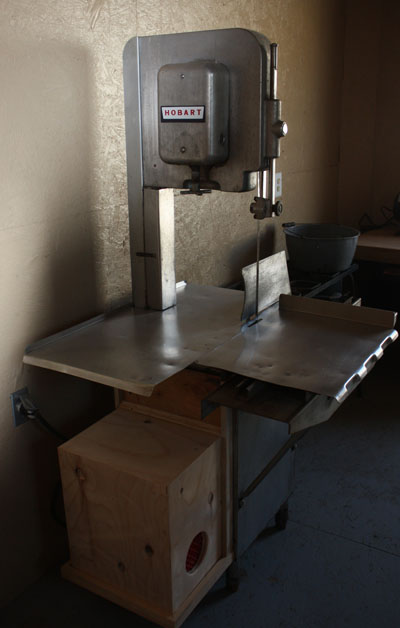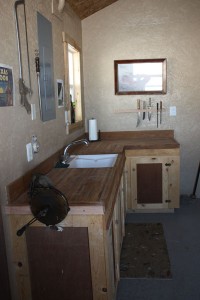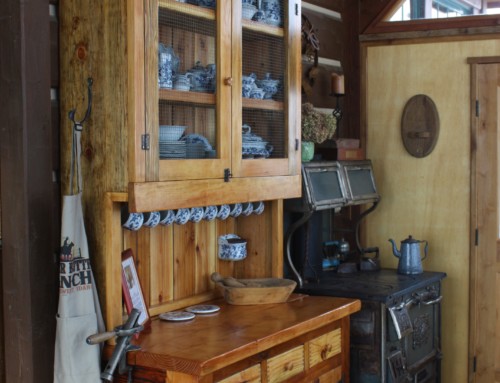Last week I came into the house to announce my victory to Nancy after spending the morning giving the old Hobart meat saw one last chance to work before retiring it to the junk pile. For nearly a year I had tried to get it running without success. This old stainless steel saw had been the original inspiration for our idea to build a butcher shop here on the homestead and now after a full year of tenacious struggle I had finally managed to get it running. (See entry #148 – Jan. 16, 2010) It had originally been given to us by our friend Elliot Sheffield. Elliot is a building contractor and had inherited the saw with a property his company had purchased. He had found it amongst a pile of old junk that was destined for the county dump and remembered my attraction for cool old stuff.
The Hobart Corporation is known for quality food preparation equipment and for their commercial meat cutting band saws. Having one given to me was like a dream come true, especially after all the years of using my hand saw. It was an awesome gift that needed to be put in a place of honor on the homestead if only I could clean it up and get it functionally working.
The first thing I noticed when I tore into it was that it had loose electrical wires randomly protruding from its very large motor. After hooking a few things together the best I could I attempted to plug it in only to set off a shower of sparks and trip the barns circuit breaker. It didn’t take long to realize that the motor was fried and beyond repair. Attempting to come up with another solution in my normal jerry rig fashion I robbed a motor off of the hay elevator. I couldn’t believe it, but even though it was powerful enough to lift a hundred pound hay bale all the way up into the barns loft it wouldn’t budge the Hobart saw. It grunted and groaned for a minute until it too threw the circuit breaker. Over the course of the next year I tried various motors of different sizes, RPM’s and built pulleys until a friend gave me a large 220 volt motor he had used to pump water. It finally almost worked. I say “almost worked” because although the saw turned (and turned at a perfect RPM), it turned backwards. It turned backwards and the motor said right on it that its polarity could not be reversed which meant it would always turn my saw backwards. Bummer! Our friend Rod Hanson (who just happens to be an electrician) stopped by on the very day this final attempt happened. It was his suggestion that I should build a special mount off to the side of the saws motor housing and install the motor backwards. It was a brilliant idea, and after just a little more shade tree jerry rigging I flipped the 220 breaker, pulled on the saws special safety switch and with a great deal of fulfilled satisfaction watched as it not only worked but actually turned the blade in the right direction.
The moral of the story (if there is one to be had) is simply this; if you’re too cheap to spend a bunch of money doing things in orthodox ways a little ingenuity and tenacity nearly always will pay off. Not only that, but there is great satisfaction when you feel like you have somehow beaten the system.
Now with the meat saw in functional order, the meat tracks hung, and the counter tops seasoned and ready for use we are finally in the market for spring calves and lambs.











Leave A Comment
You must be logged in to post a comment.